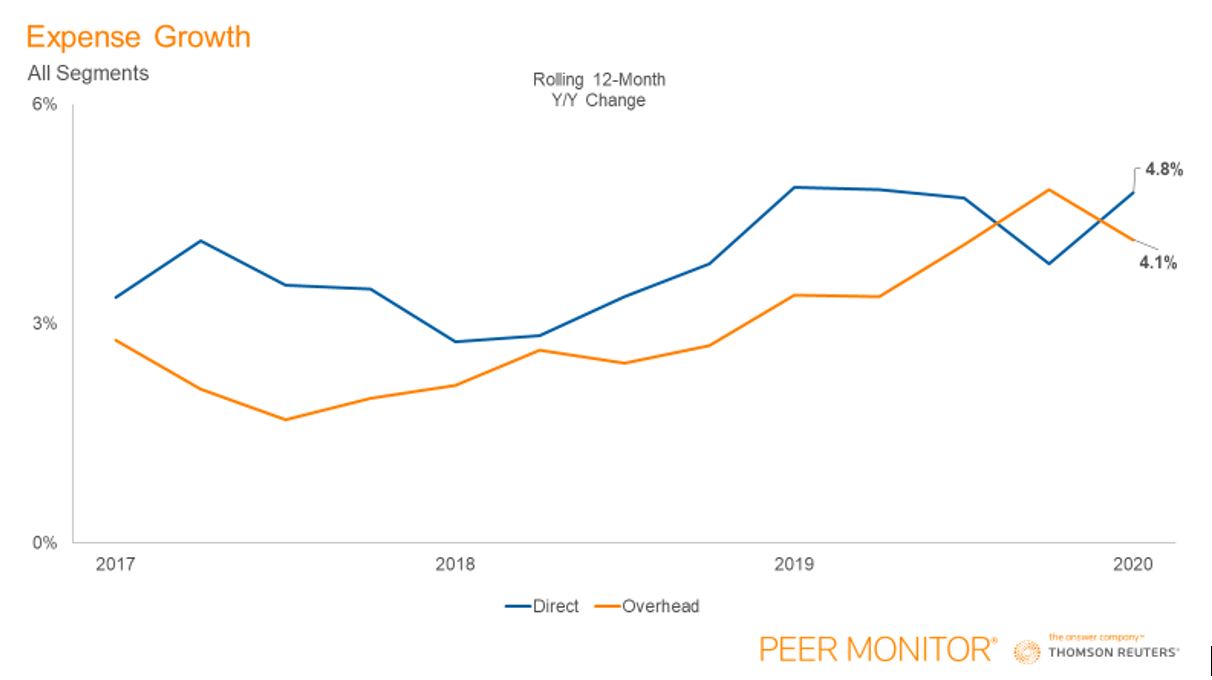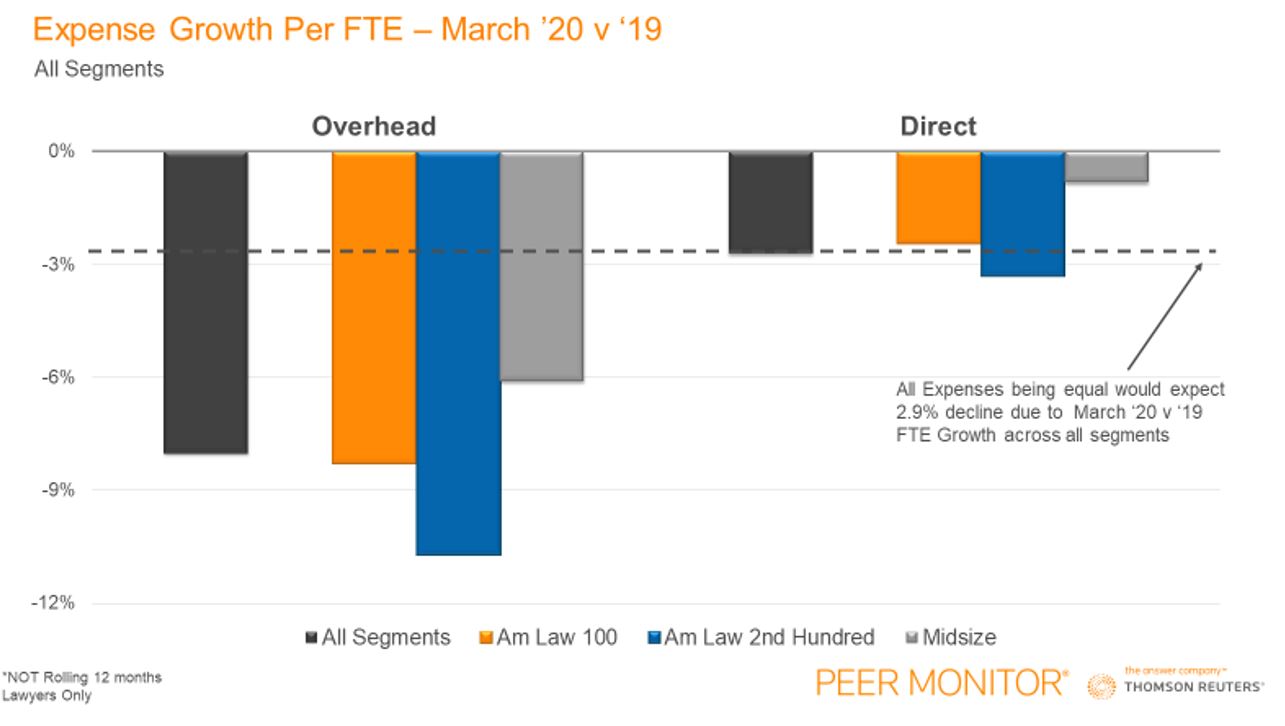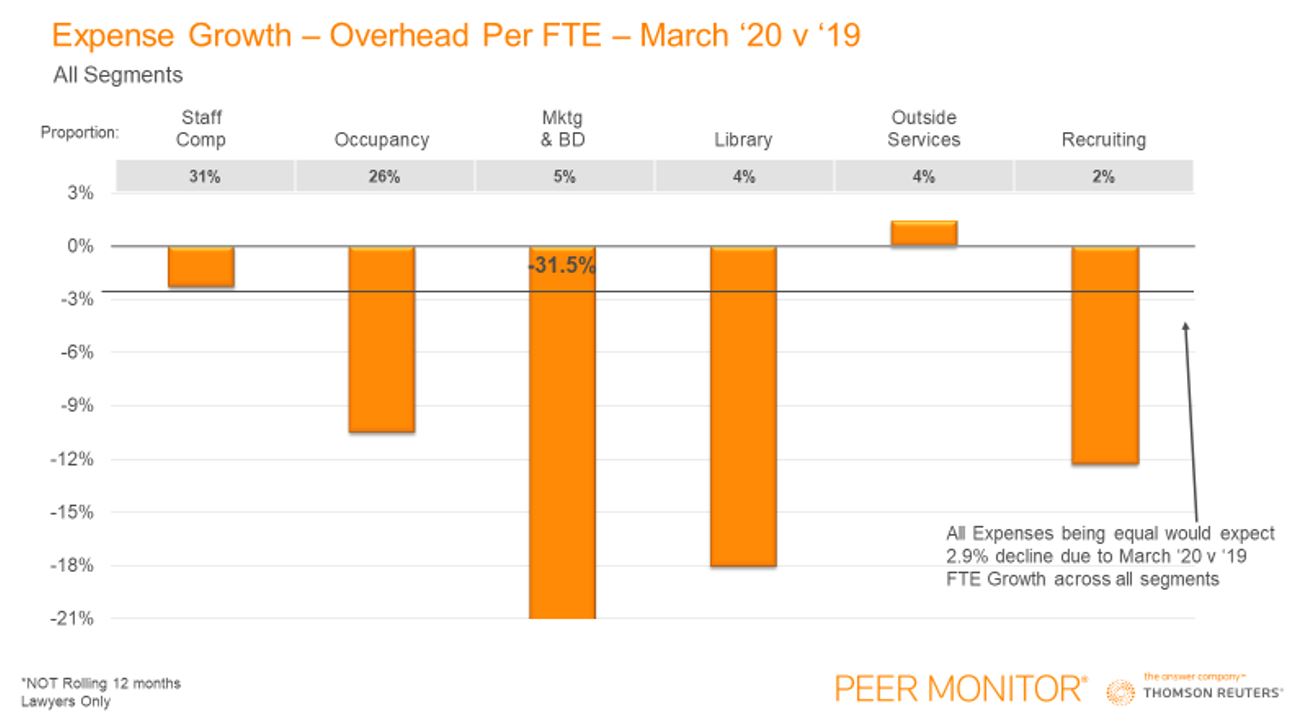As we look deeper into the PMI for Q1, we see how firms' overhead expenses ticked down slightly, however that downtick says much more than it first appears
As the country’s response to COVID-19 ramped up in the final two weeks of March, including lockdowns and shuttering of businesses deemed non-essential, uncertainty for the future loomed across the large law firm market.
Stay-at-home orders and court closures took lawyers out of their offices and courtrooms, challenging them to adapt to new ways of working in a very short period of time. While the beginning of the first quarter looked much different than the end of the quarter, reflecting on recent changes in the legal industry as a whole can be quite useful when trying to determine an effective strategy moving forward.
The Thomson Reuters Peer Monitor Economic Index (PMI) for the first quarter of 2020 jumped four points to 57. While some would say that any analysis of the first quarter is less impactful in light of the impact of the pandemic, we would argue that it really depends at what you’re looking for. The PMI maintains a standard reporting structure to gauge law firm performance based on five key financial benchmarks and how those metrics change in a historical context. These key indicators include demand, rates, productivity, direct expenses (fee earner compensation), and overhead expenses. This standardized reporting doesn’t look for COVID-19 effects, however, by using Peer Monitor’s granular monthly data, we can unveil some secrets from behind the curtain.
The PMI tracks expenses on a rolling 12-month basis, to mitigate fluctuations in various expenses over the course of a year. As a result, a significant cut in expenses in just one month — we’re looking at you, March — would initially weigh less heavily on the average because of the previous 11 months of positive growth.

Overhead expenses ticked down slightly in Q1 2020 from Q4 2019; but if we dive deeper into March specifically, that downtick holds a lot more information than meets the eye.

When looking at just March, expenditure per lawyer relative to the previous year paints a much clearer picture of the how many large law firms were preparing for an anticipated slowdown in demand across the market.
While it is true that increased headcount in the legal market over the last year would factor in heavily, with all other expenses being equal, that would only account for a 2.9% decrease. (More specifically, full-time equivalent (FTE) growth in March 2020 of 2.9% compared to March 2019, would drop the average in both direct and overhead expenses per FTE in the same amount.) Anything beyond our “real” 0% line — the dashed line in the figure above — would constitute cuts in spending per FTE unattributable to headcount increases.
Direct expenditure per FTE has decreased, albeit in most cases at or below our average headcount growth figure. Or, to put it another way, our declines in direct expenditure in March have yet to point towards the beginning of large-scale layoffs in the industry. While overhead expenses per FTE across the market saw the average firm contract 8.0% from March 2019, which was more than five percentage points above the March FTE growth.

The largest overhead category by proportion of total overhead expenditure is, of course, staff compensation, which again showed no signs of layoffs. Declines in neither direct nor overhead compensation accounts reflect layoffs or furloughs yet in March. Indeed, if law firms have been preparing for an expected global recession, the lack of large-scale layoffs — at least, thus far in the current crisis — is in stark contrast from the market’s response during the last economic upheaval, the Great Recession of 2008.
A large driver of overhead expense contraction comes from the marketing & business development area. On average, law firms cut around 32% of their spending (not including compensation) in this category, compared to March of last year. This contraction was compounded by cancelations of events, retreats, and even meals with prospective clients — all bedrock venues of marketing & business development activities. Occupancy, library, and recruiting cuts also reflect some of the other areas where firms have begun trimming their budgets over the last couple weeks of March.
In summation, looking at expenses on a monthly basis can be variable. However, when data trends line up with all the rhetoric in the legal industry, it lends more credence to what the data is trying to say.
You can download a copy of the Thomson Reuters Peer Monitor Economic Index (PMI) report for the first quarter of 2020 here.






